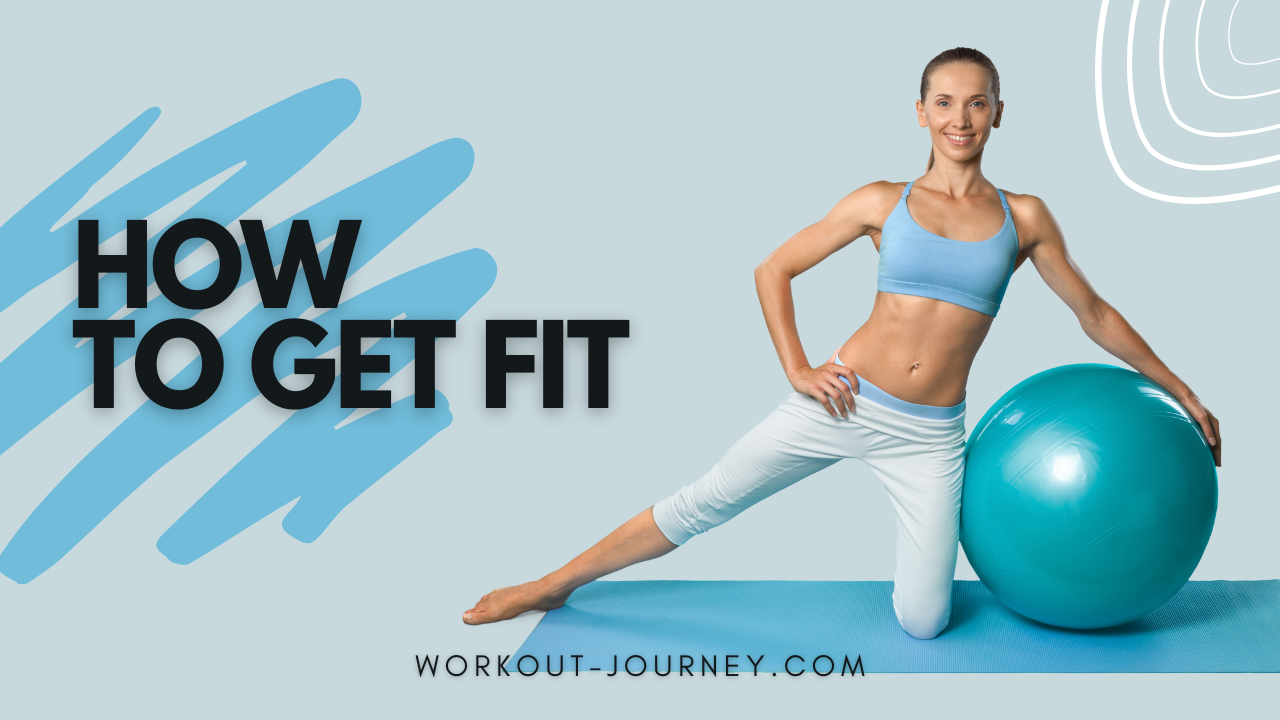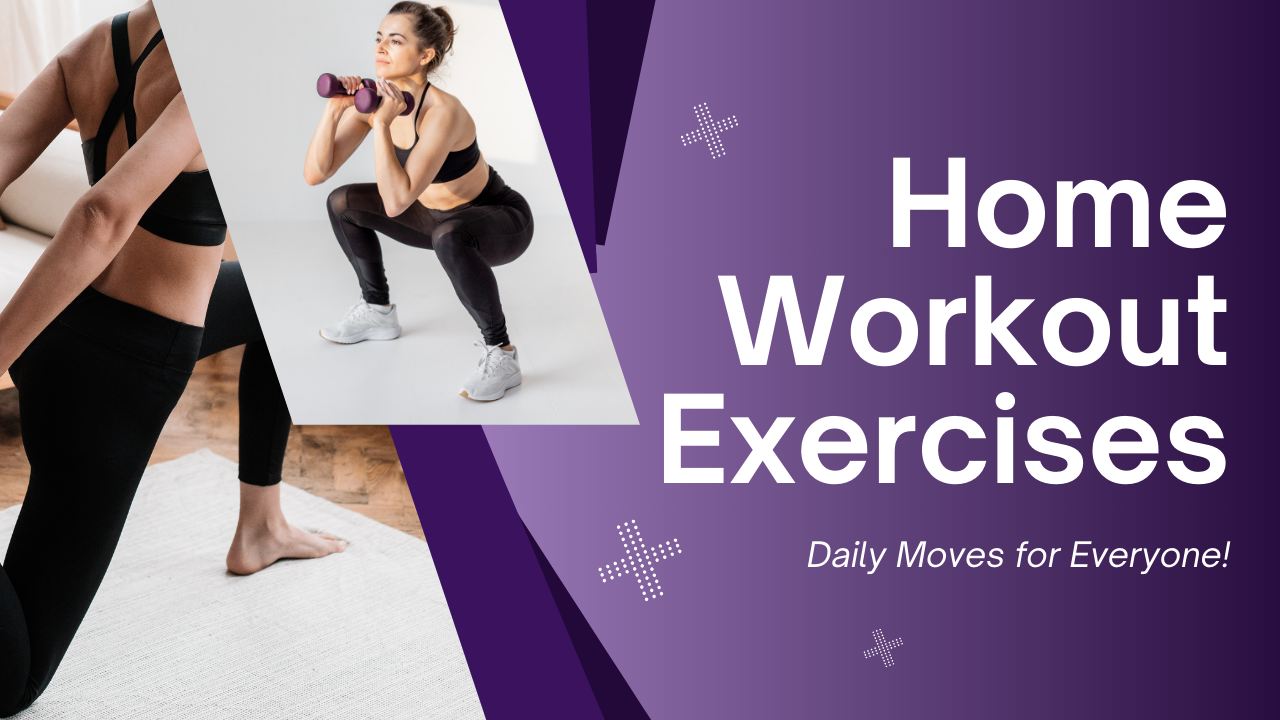How to Get Fit: A Comprehensive Guide to Achieving Your Fitness Goals
How to Get Fit is a journey that requires consistency, dedication, and a clear understanding of the steps involved.
Whether you’re a beginner or looking to get back on track, understanding how to approach fitness can make all the difference.
This guide provides an in-depth look at how to fit exercise into your life, how to create a sustainable routine, and how to stay motivated for long-term success.
What Does How to Get Fit Really Mean?
When people say they want to How to Get Fit, they often mean improving their overall health and physical performance. But the concept of fitness is multifaceted and includes:
- Strength: Building muscle through resistance training.
- Endurance: Improving your cardiovascular system through aerobic activities.
- Flexibility: Enhancing your range of motion to improve mobility and prevent injuries.
- Balance: Training your body to maintain stability in both static and dynamic movements.
Fitness is not about achieving a specific body type or completing an extreme workout regimen. It’s about enhancing your well-being in a way that’s sustainable, enjoyable, and right for you.
READ MORE: Ultimate In-Depth Guide to Fitness
Step 1: Set Clear and Realistic Fitness Goals
Before you start, it’s important to define what How to Get Fit means to you. Goals will guide your efforts and help you stay motivated. Your fitness goals should be:
- Specific: What do you want to achieve? E.g., “I want to lose 10 pounds” or “I want to be able to run a 5k.”
- Measurable: How will you track progress? E.g., tracking reps, weight lifted, distance run, or body measurements.
- Achievable: Start with goals that are challenging but realistic based on your current fitness level.
- Relevant: Your goals should align with your personal interests and lifestyle.
- Time-bound: Set deadlines to create urgency and keep you accountable.
A goal might look like: “I want to lose 5 pounds in the next 4 weeks by doing cardio 3 times per week and incorporating strength training.”
Step 2: Create a Balanced Workout Routine
A balanced fitness routine includes various components, each playing a unique role in your progress. Here’s how you can structure your routine:
1. Strength Training (2-4 Days per Week)
Strength training is a key part of How to Get Fit because it helps build lean muscle, increase metabolism, and improve overall strength. You don’t need to lift heavy weights to see results; bodyweight exercises or resistance bands work well too.
- Upper Body: Push-ups, shoulder presses, bicep curls.
- Lower Body: Squats, lunges, deadlifts.
- Core: Planks, crunches, leg raises.
Tip: If you’re new to weightlifting or bodyweight exercises, start with lighter weights or gradually increase intensity as you gain strength.
2. Cardiovascular Exercise (3-5 Days per Week)
Cardio exercises are essential for building endurance and improving heart health. Incorporate activities like:
- Running or Jogging: Start with short distances or intervals, gradually increasing the length and intensity.
- Cycling: A low-impact option that’s great for leg strength and stamina.
- Swimming: A full-body workout that’s easy on the joints.
- HIIT (High-Intensity Interval Training): Short bursts of intense activity followed by rest periods.
Tip: Start with 15-20 minutes per session and work your way up to 30-45 minutes.
3. Flexibility and Mobility (2-3 Days per Week)
Incorporating stretching and mobility exercises will help improve your flexibility, prevent injuries, and support overall muscle recovery.
- Static Stretching: Hold stretches for 15-30 seconds to target key muscle groups.
- Dynamic Stretching: Perform controlled movements that stretch muscles through a full range of motion (e.g., leg swings, arm circles).
- Yoga or Pilates: Excellent for flexibility, balance, and stress relief.
Tip: Focus on areas of your body that are tight, like hamstrings, lower back, and shoulders.
4. Rest and Recovery (1-2 Days per Week)
Rest days are crucial for muscle recovery and preventing burnout. Incorporate active rest, like walking or gentle yoga, if you feel the need for movement.
Tip: Don’t underestimate the power of sleep—adequate rest is essential for muscle repair and overall well-being.
Step 3: Nutrition for Fitness
What you eat plays a critical role in supporting your fitness journey. Proper nutrition fuels your workouts, helps with recovery, and contributes to achieving your goals.
1. Fuel Your Workouts
Eat a balanced meal 1-2 hours before exercising. A combination of protein, carbohydrates, and healthy fats provides sustained energy during your workout.
- Example: A banana with peanut butter, or a small whole-grain sandwich with lean protein (chicken, turkey, etc.).
2. Post-Workout Nutrition
After exercising, your body needs protein to repair muscles and carbohydrates to replenish energy stores.
- Example: A protein shake, or a grilled chicken salad with quinoa.
3. Stay Hydrated
Drinking water throughout the day is essential for overall health, but especially important when working out. Dehydration can affect performance and recovery.
4. Eat for Recovery
Include nutrient-dense foods like fruits, vegetables, whole grains, and lean protein. These help with muscle repair and reduce inflammation.
Step 4: Incorporate Consistency and Accountability
It’s easy to feel motivated at the start of your fitness journey, but staying consistent is key to long-term success.
1. Track Your Progress
Track your workouts, food intake, and progress (e.g., weight lifted, distance run, body measurements) to see improvements over time.
2. Stay Accountable
Find a workout buddy or join a fitness community to stay motivated. Sharing your progress with others can help keep you on track and inspired.
3. Make Fitness Part of Your Lifestyle
Rather than treating fitness as a temporary goal, aim to make it a permanent part of your daily routine. Schedule workouts like any other important task, and make them non-negotiable.
Step 5: Overcome Challenges and Stay Motivated
There will be times when you face setbacks or lack motivation, but overcoming these challenges is part of the journey.
- Stay Positive: Focus on how far you’ve come rather than what you haven’t achieved yet.
- Adjust Goals: If necessary, break larger goals into smaller, more manageable ones.
- Celebrate Milestones: Celebrate your achievements, no matter how small they may seem.
Conclusion
Getting fit is a process that requires patience and perseverance.
By setting clear goals, creating a balanced workout routine, fueling your body with proper nutrition, and staying consistent, you can achieve long-term fitness success.
The most important part of How to Get Fit is that it’s personal—what works for one person might not work for another, so find what feels best for you and stay committed to your health.
Remember, fitness is not about perfection; it’s about progress. Take it one step at a time, and you’ll get fitter, stronger, and healthier with every workout.


